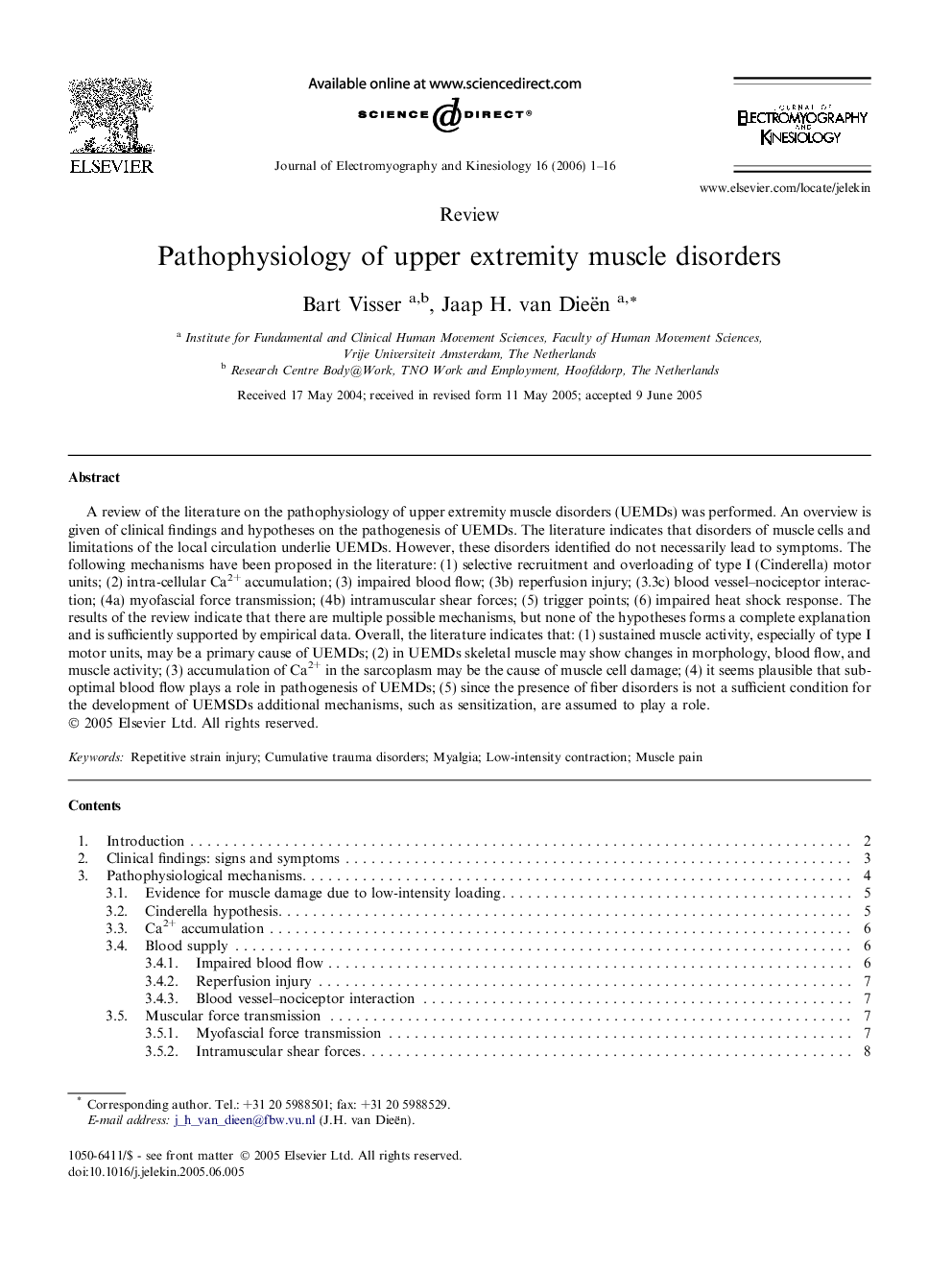| Article ID | Journal | Published Year | Pages | File Type |
|---|---|---|---|---|
| 4065509 | Journal of Electromyography and Kinesiology | 2006 | 16 Pages |
A review of the literature on the pathophysiology of upper extremity muscle disorders (UEMDs) was performed. An overview is given of clinical findings and hypotheses on the pathogenesis of UEMDs. The literature indicates that disorders of muscle cells and limitations of the local circulation underlie UEMDs. However, these disorders identified do not necessarily lead to symptoms. The following mechanisms have been proposed in the literature: (1) selective recruitment and overloading of type I (Cinderella) motor units; (2) intra-cellular Ca2+ accumulation; (3) impaired blood flow; (3b) reperfusion injury; (3.3c) blood vessel–nociceptor interaction; (4a) myofascial force transmission; (4b) intramuscular shear forces; (5) trigger points; (6) impaired heat shock response. The results of the review indicate that there are multiple possible mechanisms, but none of the hypotheses forms a complete explanation and is sufficiently supported by empirical data. Overall, the literature indicates that: (1) sustained muscle activity, especially of type I motor units, may be a primary cause of UEMDs; (2) in UEMDs skeletal muscle may show changes in morphology, blood flow, and muscle activity; (3) accumulation of Ca2+ in the sarcoplasm may be the cause of muscle cell damage; (4) it seems plausible that suboptimal blood flow plays a role in pathogenesis of UEMDs; (5) since the presence of fiber disorders is not a sufficient condition for the development of UEMSDs additional mechanisms, such as sensitization, are assumed to play a role.
